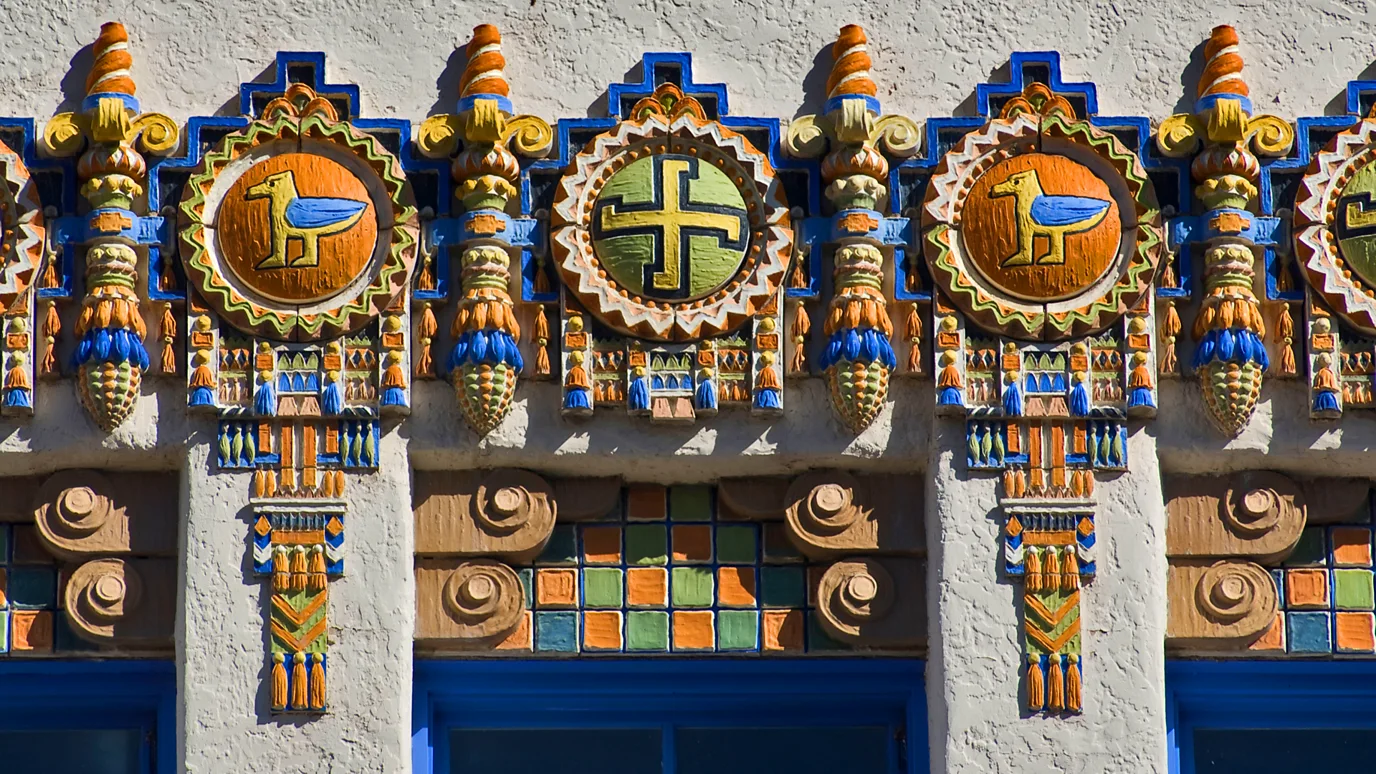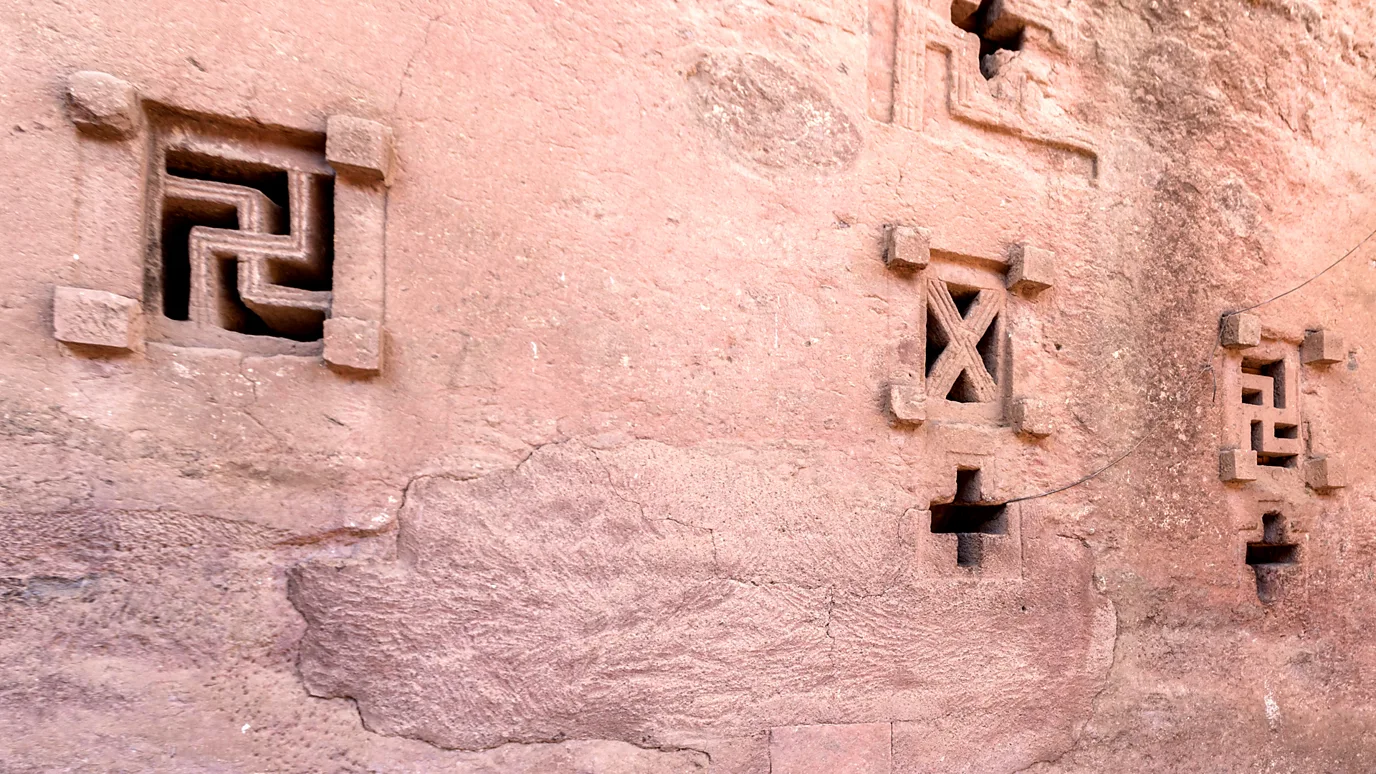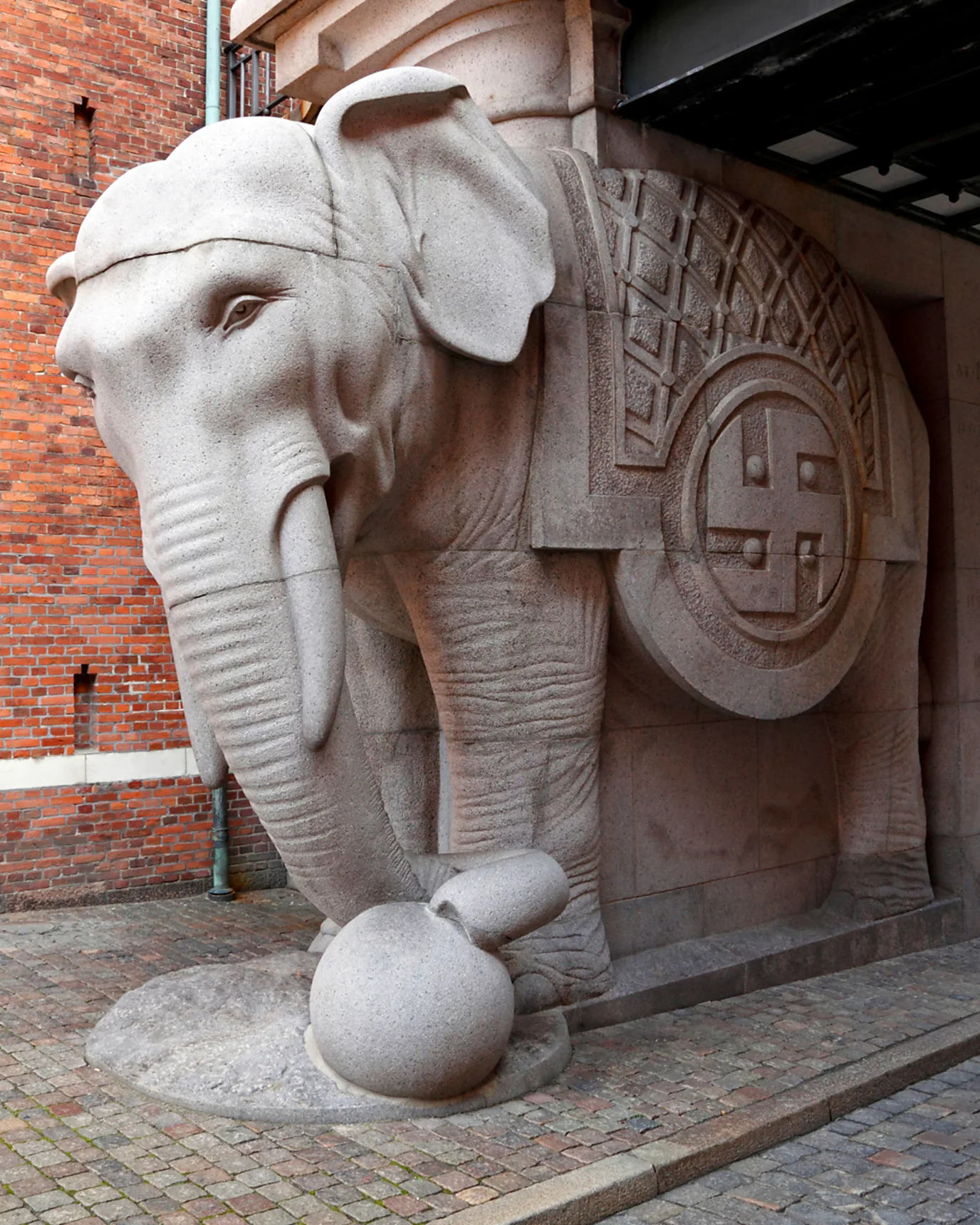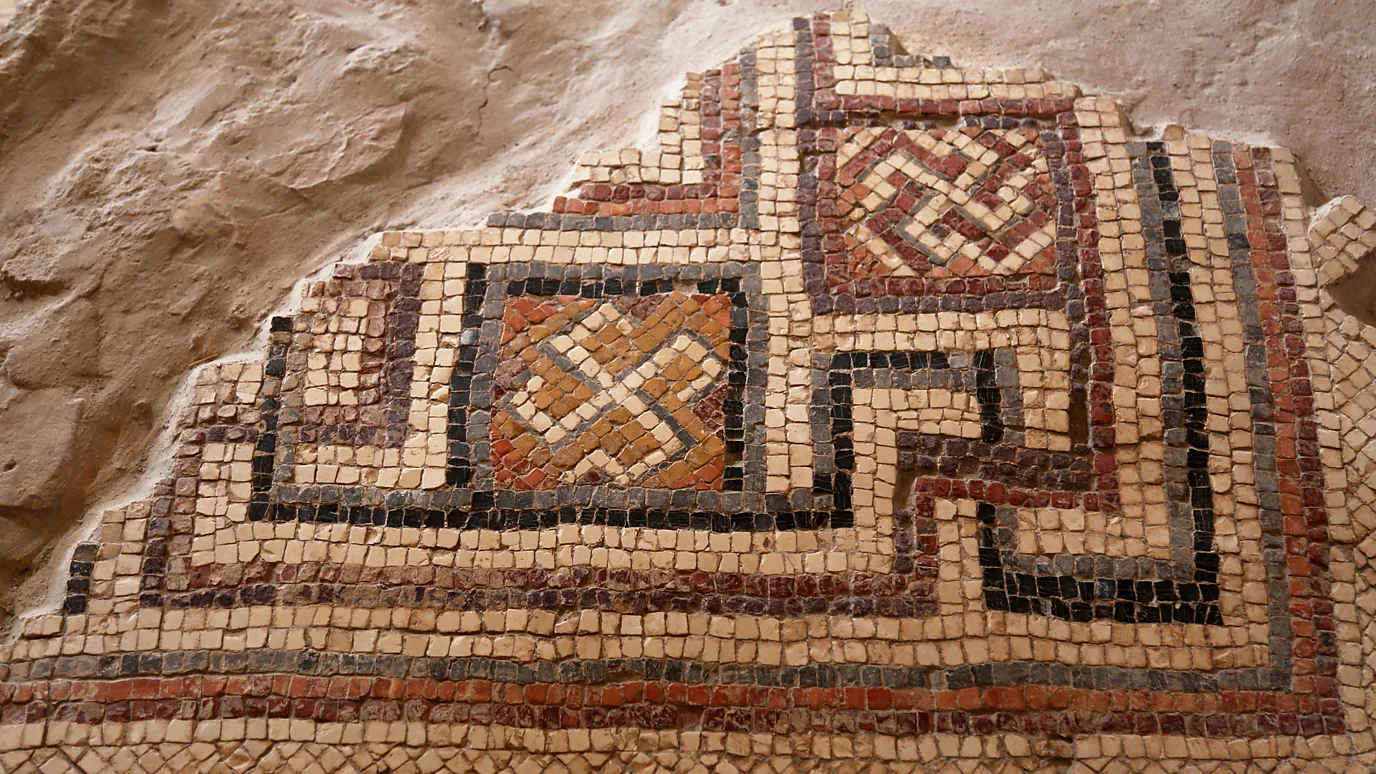Swastika
-
Douglas Mercer
- Posts: 10931
- Joined: Tue Mar 28, 2023 7:29 pm
Swastika
Douglas Mercer
February 25 2025
In 1871 amateur archeologist Heinrich Schliemann became famous for his excavations of Troy. At the Hissarlik site he found hundreds of objects ranging from pottery shards and terra cotta whorls to ornaments which bore the sign of the swastika. Immediately upon seeing this symbol he recognized that there were similar signs on pots found near Konigswalde on the river Oder in German. Upon making this connection Schliemann postulated that the swastika was the principle religious symbol of our Aryan ancestors which linked the ancient Greeks, the Teutons, and Vedic India. Schliemann’s instant and spectacular fame made it certain that his finds at Troy were given a vast and wide European audience for his thoughts on the symbol of the Swastika bridging the Aryans of the East and West. Due to Schliemann’s efforts the swastika was immediately and swiftly launched as the Aryan symbol sine qua non in the mind of the European intellectual class.
Swastika means luck or good fortune, long life, auspiciousness.
The Swastika can mean good luck, or it can represent the sun crossing the sky, while some represent Thor’s hammer being thrown. What the Swastika really is is the insignia and or the quintessential religious symbol for our kind that links us to the Creator. The fact that our enemies call it the crooked cross is the perfect illustration of the subversion of our people. In 1934 a White traitor named Sylvia Carson wrote a novel called The Crooked Cross which popularized this heinous term. The novel is said to have predicted the evils of National Socialism by showing a group of young and disaffected German youth who turn toward an authoritarian leader for answers. It is no surprise that this obscure novel will be reprinted this year (2025).
Persephone Books, which reprints neglected fiction and non-fiction, mostly by women, is set to publish a forgotten literary masterpiece, Crooked Cross by Sally Carson, in time for the 80th anniversary of the end of WWII (2025), with a PR campaign by Midas.
Crooked Cross is everything a Persephone book seeks to be: beautifully written, unputdownable, thought-provoking. To have the opportunity to rescue this literary masterpiece from being entirely lost is an immense privilege. As the lessons history has taught us seem worryingly close to being forgotten, now feels like the right time to share it with the world.
Ah, the ever-present lessons of history that need to be learned now that more and more people are waking up the long-standing evil of the Jews. So they will dust of this hoary tome and send a warning: it can happen here. You bet it can. Indeed, it is happening here. The Jews should be worried.
Carson foresaw a dark and violent future for Europe and gave voice to those fears in a 1934 novel that is now being hailed as an electrifying masterpiece. Carson’s book, Crooked Cross, predicted the scale of the Nazi threat and is to be republished for the first time this spring, ahead of the 80th anniversary of the end of the second world war. Controversial in its day, her novel had to tread a careful path to avoid the accusation that it was alarmist about the Führer’s aims. Persephone Books will now mount its own revival of the play, with a fully cast, professional public reading of the script in April 2025 to be held above its bookshop in Bath. It will be the first time audiences have heard the dramatization since the curtain came down on the original London production.
***
The Swastika is a symbol of the Creator as it truly is — it is a symbol of existence itself, of life and birth, and of pushing back the darkness of nothingness. Whirlwinds and distant spiral galaxies and hurricanes and tornadoes look like swastikas which is the very force of nature in its awesome manifestation of power.
The word swastika comes from Sanskrit meaning conducive to wellbeing. In Hinduism the right facing symbol (clockwise) is called swastika, symbolizing surya (sun), prosperity and good luck. In various Indo-European traditions the swastika represents fire, lightning bolts, and the sun, the sacred symbols of the Aryans, as we are the Promethean people who brought fire from the gods for the use of our race.
The word swastika is derived from the Sanskrit root swasti, which is composed of su good, well and asti is; it is; there is (ie, Heidegger's Dasein). The word swasti occurs frequently in the Vedas as well as in classical literature, meaning health, luck, success, prosperity, and it was commonly used as a greeting.
Originally the swastika was a solar symbol, much like the Roman Sol Invictus, once more linking the Easter and Western Tribes of the Aryan Race. The sign implies well-being, something fortunate, lucky, or auspicious. It is alternatively spelled in contemporary texts as svastika, and other spellings were occasionally used in the 19th and early 20th century, such as suastika.
An important early use of the word swastika in a European text was in 1871 with the publications of Heinrich Schliemann, who discovered more than 1,800 ancient samples of swastika symbols and variants thereof while digging the Hisarlik mound near the Aegean Sea coast for the history of Troy. Schliemann linked his findings to the Sanskrit swastika.
By the 19th century, the term swastika was adopted into the English lexicon, replacing the previous gammadion from Greek γαμμάδιον. In 1878, Irish scholar Charles Graves used swastika as the common English name for the symbol, after defining it as equivalent to the French term croix gammée – a cross with arms shaped like the Greek letter gamma. Shortly thereafter, British antiquarians Edward Thomas and Robert Sewell separately published their studies about the symbol, using swastika as the common English term.
According to René Guénon, the swastika represents the north pole, and the rotational movement around a center or immutable axis (axis mundi), and only secondly it represents the Sun as a reflected function of the north pole. As such it is a symbol of life, of the vivifying role of the supreme principle of the universe, the absolute God, in relation to the cosmic order.
It represents the activity (the Hellenic Logos, the Hindu Om, the Chinese Taiyi, Great One) of the principle of the universe in the formation of the world. According to Guénon, the swastika in its polar value has the same meaning of the yin and yang symbol of the Chinese tradition, and of other traditional symbols of the working of the universe, including the letters gamma and G, symbolizing the Great Architect of the Universe in Greek Thought.
In their 1985 book Comet, Carl Sagan and Ann Druyan argue that the appearance of a rotating comet with a four-pronged tail as early as 2,000 years BCE could explain why the swastika is found in the cultures of both the Old World and the pre-Columbian Americas. The Han dynasty Book of Silk (2nd century BCE) depicts such a comet with a swastika-like symbol.
In Asia, swastika symbols first appear in the archaeological record around 3000 BCE in the Indus Valley Civilization. It also appears in the Bronze and Iron Age cultures around the Black Sea and the Caspian Sea. The swastika was a symbol of the revolving sun, infinity, or continuing creation. It is one of the most common symbols on Mesopotamian coins. Some researchers put forth the hypothesis that the swastika moved westward from the Indian subcontinent to Finland, Scandinavia, the Scottish Highlands and other parts of Europe. In England, neolithic or Bronze Age stone carvings of the symbol have been found on Ilkley Moor, such as the Swastika Stone.
In Armenia the swastika is called the arevakhach and kerkhach and is the ancient symbol of eternity and eternal light (i.e. God). Swastikas in Armenia were found on petroglyphs from the copper age, predating the Bronze Age. During the Bronze Age it was depicted on cauldrons, belts, medallions and other items
The swastika is thus the symbol of the Aryans and the Symbol of the Creator.
The National Socialist adoption of the swastika owed much to Adolf Hitler himself. According to the account he gave in Mein Kampf, Hitler personally designed the Nazi flag in 1920, with its strikingly harmonious combination of red, black, and white, which recalled the German Imperial colors, and with the swastika at its center, rotated 45 degrees from horizontal. It was this design that was adopted as the national flag of Germany in 1935.
In addition to this, the state arms of the Third Reich—the Hoheitsabzeichen, which displayed a wreathed swastika clutched in the talons of the Nazi eagle—always showed the symbol rotated at 45 degrees. This, then, is the swastika’s most typical depiction in National Socialist usage.
The motif appears to have first been used in Eurasia, as early as 7,000 years ago, perhaps representing the movement of the sun through the sky as a symbol of wellbeing in ancient societies,
The word swastika comes from the Sanskrit roots su (good) and asti (to prevail), meaning wellbeing, prosperity or good fortune, and has been used in the prayers of the Rig Veda, the oldest of Hindu scriptures. In Hindu philosophy it is said to represent various things that come in fours – the four yugas or cyclical times, the four aims or objectives of life, four stages of life, the four Vedas. Swastika is even a girl's name in certain parts of India.
In India, it's a symbol of the sun god with a clockwise orientation, and the auspicious symbol can be seen, often smeared in turmeric, drawn on thresholds and shop doors as a sign of welcome, or on vehicles, religious scriptures and letterheads. It is displayed at weddings and other festive occasions, to consecrate a new home, and while opening account books at the beginning of the financial year or starting a new venture.
The swastika is a four-dimensional cube used in Vedic Mathematics and also symbolizes an entire state of being in Indian philosophy – the fourth state of consciousness, which is beyond waking, sleeping and dreaming.
Thomas Wilson documents how the swastika was found all over the ancient world, on everything from quilts and shields to jewelry. Some believe that its shape was inspired by an ancient comet. The Ancient Greeks used swastika motifs to decorate their pots and vases. The ancient Druids and Celts also used the sacred sign, and in Norse mythology the swastika represented Thor's hammer.
In the early 20th Century, the swastika was widely used in Europe as a symbol of good luck. Interlocked swastikas were used in textiles and architecture. The sign was used in many ways before Hitler adapted it. A sign of good fortune, fertility, happiness, Sun, and it was given spiritual import as well as commercial value when it was used with or as a brand or logo, says Heller. In the early 20th Century, the swastika was used as a symbol of good luck in advertising, architecture and jewelry.
It has been suggested that Hitler's adoption of the symbol may have had its roots in Germans finding similarity between their language and Sanskrit, and drawing a conclusion that Indians and Germans came from the same pure Aryan ancestry and lineage. During his extensive excavations, the German archaeologist Heinrich Schliemann discovered in in 1871, 1,800 variations of the swastika on pottery fragments at the site of ancient Troy, which were similar to artifacts from German history. This was seen the National Socialists as evidence for a racial continuity and proof that the inhabitants of the site had been Aryan all along.
***
Notes:
What fascinated Savitri Devi most in her travels in India is that what she was seeing was the living embodiment of what Europe would have been like had it not been subverted by the Jews.
In the novel The Great Gatsby the evil Jew Wolfsheim has a front company which is called The Swastika Holding Company.
February 25 2025
In 1871 amateur archeologist Heinrich Schliemann became famous for his excavations of Troy. At the Hissarlik site he found hundreds of objects ranging from pottery shards and terra cotta whorls to ornaments which bore the sign of the swastika. Immediately upon seeing this symbol he recognized that there were similar signs on pots found near Konigswalde on the river Oder in German. Upon making this connection Schliemann postulated that the swastika was the principle religious symbol of our Aryan ancestors which linked the ancient Greeks, the Teutons, and Vedic India. Schliemann’s instant and spectacular fame made it certain that his finds at Troy were given a vast and wide European audience for his thoughts on the symbol of the Swastika bridging the Aryans of the East and West. Due to Schliemann’s efforts the swastika was immediately and swiftly launched as the Aryan symbol sine qua non in the mind of the European intellectual class.
Swastika means luck or good fortune, long life, auspiciousness.
The Swastika can mean good luck, or it can represent the sun crossing the sky, while some represent Thor’s hammer being thrown. What the Swastika really is is the insignia and or the quintessential religious symbol for our kind that links us to the Creator. The fact that our enemies call it the crooked cross is the perfect illustration of the subversion of our people. In 1934 a White traitor named Sylvia Carson wrote a novel called The Crooked Cross which popularized this heinous term. The novel is said to have predicted the evils of National Socialism by showing a group of young and disaffected German youth who turn toward an authoritarian leader for answers. It is no surprise that this obscure novel will be reprinted this year (2025).
Persephone Books, which reprints neglected fiction and non-fiction, mostly by women, is set to publish a forgotten literary masterpiece, Crooked Cross by Sally Carson, in time for the 80th anniversary of the end of WWII (2025), with a PR campaign by Midas.
Crooked Cross is everything a Persephone book seeks to be: beautifully written, unputdownable, thought-provoking. To have the opportunity to rescue this literary masterpiece from being entirely lost is an immense privilege. As the lessons history has taught us seem worryingly close to being forgotten, now feels like the right time to share it with the world.
Ah, the ever-present lessons of history that need to be learned now that more and more people are waking up the long-standing evil of the Jews. So they will dust of this hoary tome and send a warning: it can happen here. You bet it can. Indeed, it is happening here. The Jews should be worried.
Carson foresaw a dark and violent future for Europe and gave voice to those fears in a 1934 novel that is now being hailed as an electrifying masterpiece. Carson’s book, Crooked Cross, predicted the scale of the Nazi threat and is to be republished for the first time this spring, ahead of the 80th anniversary of the end of the second world war. Controversial in its day, her novel had to tread a careful path to avoid the accusation that it was alarmist about the Führer’s aims. Persephone Books will now mount its own revival of the play, with a fully cast, professional public reading of the script in April 2025 to be held above its bookshop in Bath. It will be the first time audiences have heard the dramatization since the curtain came down on the original London production.
***
The Swastika is a symbol of the Creator as it truly is — it is a symbol of existence itself, of life and birth, and of pushing back the darkness of nothingness. Whirlwinds and distant spiral galaxies and hurricanes and tornadoes look like swastikas which is the very force of nature in its awesome manifestation of power.
The word swastika comes from Sanskrit meaning conducive to wellbeing. In Hinduism the right facing symbol (clockwise) is called swastika, symbolizing surya (sun), prosperity and good luck. In various Indo-European traditions the swastika represents fire, lightning bolts, and the sun, the sacred symbols of the Aryans, as we are the Promethean people who brought fire from the gods for the use of our race.
The word swastika is derived from the Sanskrit root swasti, which is composed of su good, well and asti is; it is; there is (ie, Heidegger's Dasein). The word swasti occurs frequently in the Vedas as well as in classical literature, meaning health, luck, success, prosperity, and it was commonly used as a greeting.
Originally the swastika was a solar symbol, much like the Roman Sol Invictus, once more linking the Easter and Western Tribes of the Aryan Race. The sign implies well-being, something fortunate, lucky, or auspicious. It is alternatively spelled in contemporary texts as svastika, and other spellings were occasionally used in the 19th and early 20th century, such as suastika.
An important early use of the word swastika in a European text was in 1871 with the publications of Heinrich Schliemann, who discovered more than 1,800 ancient samples of swastika symbols and variants thereof while digging the Hisarlik mound near the Aegean Sea coast for the history of Troy. Schliemann linked his findings to the Sanskrit swastika.
By the 19th century, the term swastika was adopted into the English lexicon, replacing the previous gammadion from Greek γαμμάδιον. In 1878, Irish scholar Charles Graves used swastika as the common English name for the symbol, after defining it as equivalent to the French term croix gammée – a cross with arms shaped like the Greek letter gamma. Shortly thereafter, British antiquarians Edward Thomas and Robert Sewell separately published their studies about the symbol, using swastika as the common English term.
According to René Guénon, the swastika represents the north pole, and the rotational movement around a center or immutable axis (axis mundi), and only secondly it represents the Sun as a reflected function of the north pole. As such it is a symbol of life, of the vivifying role of the supreme principle of the universe, the absolute God, in relation to the cosmic order.
It represents the activity (the Hellenic Logos, the Hindu Om, the Chinese Taiyi, Great One) of the principle of the universe in the formation of the world. According to Guénon, the swastika in its polar value has the same meaning of the yin and yang symbol of the Chinese tradition, and of other traditional symbols of the working of the universe, including the letters gamma and G, symbolizing the Great Architect of the Universe in Greek Thought.
In their 1985 book Comet, Carl Sagan and Ann Druyan argue that the appearance of a rotating comet with a four-pronged tail as early as 2,000 years BCE could explain why the swastika is found in the cultures of both the Old World and the pre-Columbian Americas. The Han dynasty Book of Silk (2nd century BCE) depicts such a comet with a swastika-like symbol.
In Asia, swastika symbols first appear in the archaeological record around 3000 BCE in the Indus Valley Civilization. It also appears in the Bronze and Iron Age cultures around the Black Sea and the Caspian Sea. The swastika was a symbol of the revolving sun, infinity, or continuing creation. It is one of the most common symbols on Mesopotamian coins. Some researchers put forth the hypothesis that the swastika moved westward from the Indian subcontinent to Finland, Scandinavia, the Scottish Highlands and other parts of Europe. In England, neolithic or Bronze Age stone carvings of the symbol have been found on Ilkley Moor, such as the Swastika Stone.
In Armenia the swastika is called the arevakhach and kerkhach and is the ancient symbol of eternity and eternal light (i.e. God). Swastikas in Armenia were found on petroglyphs from the copper age, predating the Bronze Age. During the Bronze Age it was depicted on cauldrons, belts, medallions and other items
The swastika is thus the symbol of the Aryans and the Symbol of the Creator.
The National Socialist adoption of the swastika owed much to Adolf Hitler himself. According to the account he gave in Mein Kampf, Hitler personally designed the Nazi flag in 1920, with its strikingly harmonious combination of red, black, and white, which recalled the German Imperial colors, and with the swastika at its center, rotated 45 degrees from horizontal. It was this design that was adopted as the national flag of Germany in 1935.
In addition to this, the state arms of the Third Reich—the Hoheitsabzeichen, which displayed a wreathed swastika clutched in the talons of the Nazi eagle—always showed the symbol rotated at 45 degrees. This, then, is the swastika’s most typical depiction in National Socialist usage.
The motif appears to have first been used in Eurasia, as early as 7,000 years ago, perhaps representing the movement of the sun through the sky as a symbol of wellbeing in ancient societies,
The word swastika comes from the Sanskrit roots su (good) and asti (to prevail), meaning wellbeing, prosperity or good fortune, and has been used in the prayers of the Rig Veda, the oldest of Hindu scriptures. In Hindu philosophy it is said to represent various things that come in fours – the four yugas or cyclical times, the four aims or objectives of life, four stages of life, the four Vedas. Swastika is even a girl's name in certain parts of India.
In India, it's a symbol of the sun god with a clockwise orientation, and the auspicious symbol can be seen, often smeared in turmeric, drawn on thresholds and shop doors as a sign of welcome, or on vehicles, religious scriptures and letterheads. It is displayed at weddings and other festive occasions, to consecrate a new home, and while opening account books at the beginning of the financial year or starting a new venture.
The swastika is a four-dimensional cube used in Vedic Mathematics and also symbolizes an entire state of being in Indian philosophy – the fourth state of consciousness, which is beyond waking, sleeping and dreaming.
Thomas Wilson documents how the swastika was found all over the ancient world, on everything from quilts and shields to jewelry. Some believe that its shape was inspired by an ancient comet. The Ancient Greeks used swastika motifs to decorate their pots and vases. The ancient Druids and Celts also used the sacred sign, and in Norse mythology the swastika represented Thor's hammer.
In the early 20th Century, the swastika was widely used in Europe as a symbol of good luck. Interlocked swastikas were used in textiles and architecture. The sign was used in many ways before Hitler adapted it. A sign of good fortune, fertility, happiness, Sun, and it was given spiritual import as well as commercial value when it was used with or as a brand or logo, says Heller. In the early 20th Century, the swastika was used as a symbol of good luck in advertising, architecture and jewelry.
It has been suggested that Hitler's adoption of the symbol may have had its roots in Germans finding similarity between their language and Sanskrit, and drawing a conclusion that Indians and Germans came from the same pure Aryan ancestry and lineage. During his extensive excavations, the German archaeologist Heinrich Schliemann discovered in in 1871, 1,800 variations of the swastika on pottery fragments at the site of ancient Troy, which were similar to artifacts from German history. This was seen the National Socialists as evidence for a racial continuity and proof that the inhabitants of the site had been Aryan all along.
***
Notes:
What fascinated Savitri Devi most in her travels in India is that what she was seeing was the living embodiment of what Europe would have been like had it not been subverted by the Jews.
In the novel The Great Gatsby the evil Jew Wolfsheim has a front company which is called The Swastika Holding Company.









